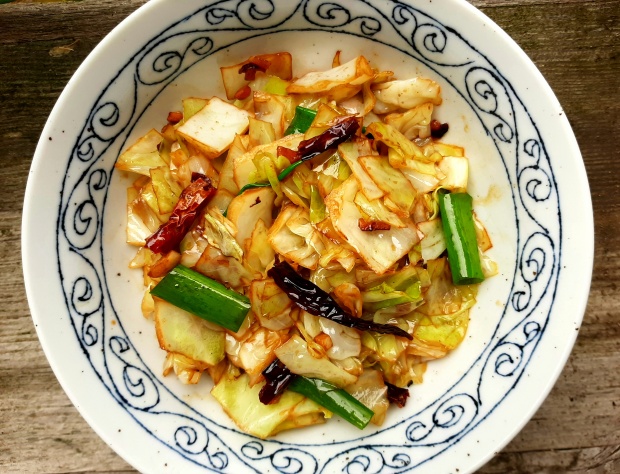This may seem like a strange thing to admit, but I’m in love with cabbage.
Yes, it’s true; I’m in a lock-down love affair with arguably the most mundane vegetable out there. Perhaps it’s the prolonged period of isolation talking, but aside from some flatulence, what’s not to love about the humble cabbage?
Cheap and readily available, this cruciferous charmer is a true veggie-hero; albeit one that is too often maligned, and sadly, unsung. Aside from its incredible shelf life, green cabbage is also one of the most versatile vegetables out there. Whether it be fermented into sauerkraut, or sautéed then added to a buttery colcannon, cabbage is the star of countless recipes from across the globe, and is ripe for a comeback!
Typically most of us don’t associate a bog-standard “western” cabbage with Asian cooking; instead, we tend to think of exotics such as bok choy and napa cabbage as the staples of such cuisines. Nothing could be further from the truth! From being a key component in Sayur Lodeh (Malaysian Vegetable in Coconut Milk), and a traditional accompaniment to Phad Thai Noodles, green cabbage is a surprisingly common ingredient in many Asian dishes. In fact, if you have a wedge of cabbage lurking at the back of the fridge, you are actually halfway to making some amazing, and authentic, Asian meals.
Which brings me to this little gem of a dish!
From wok to plate in just a few minutes, Sichuan Stir-Fry Cabbage is a true “lifesaver” recipe for when you are in a pinch and need to make a small amount of food go far – without compromising on flavour. Satisfyingly spicy and reassuringly comforting, this simple meal has all the hallmarks of a classic home-cooked Chinese dish.
This is a thoroughly adaptable recipe, please feel free to add a protein of your choice if desired. Thinly sliced pork works amazingly well and would be my preferred addition, but chicken is also a good option. Again, a little goes a long way and a small portion of meat can be stretched to feed many. Prefer a vegetarian or vegan version? Not a problem, simply leave out the meat altogether. With or without meat, this tasty and affordable recipe is cheap and nutritious, and delivers a lot of Sichuan–bang for your buck, as it it were.
Now that’s a dish worth gassing about.
For more Chinese recipes from the Muddled Pantry, please follow the link here.
For tips on stocking a Chinese pantry, please follow the link here. Click here for the recipe









